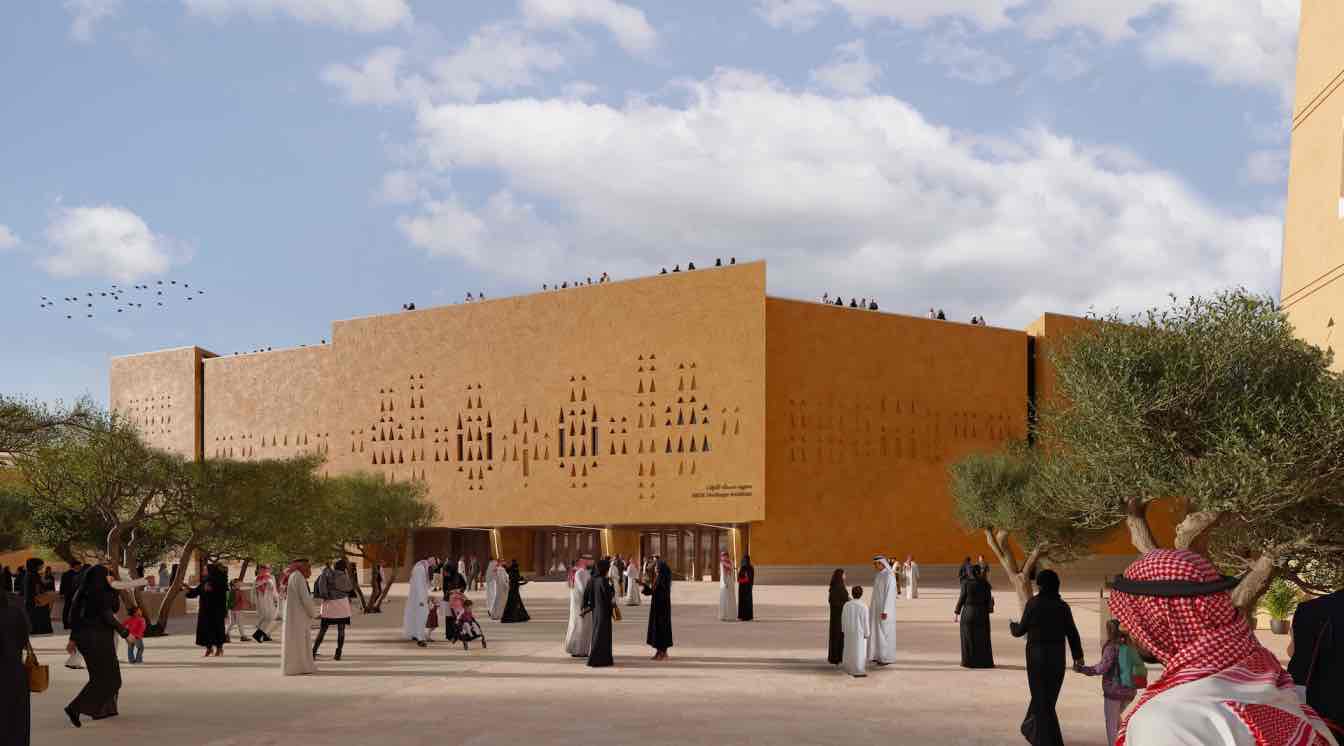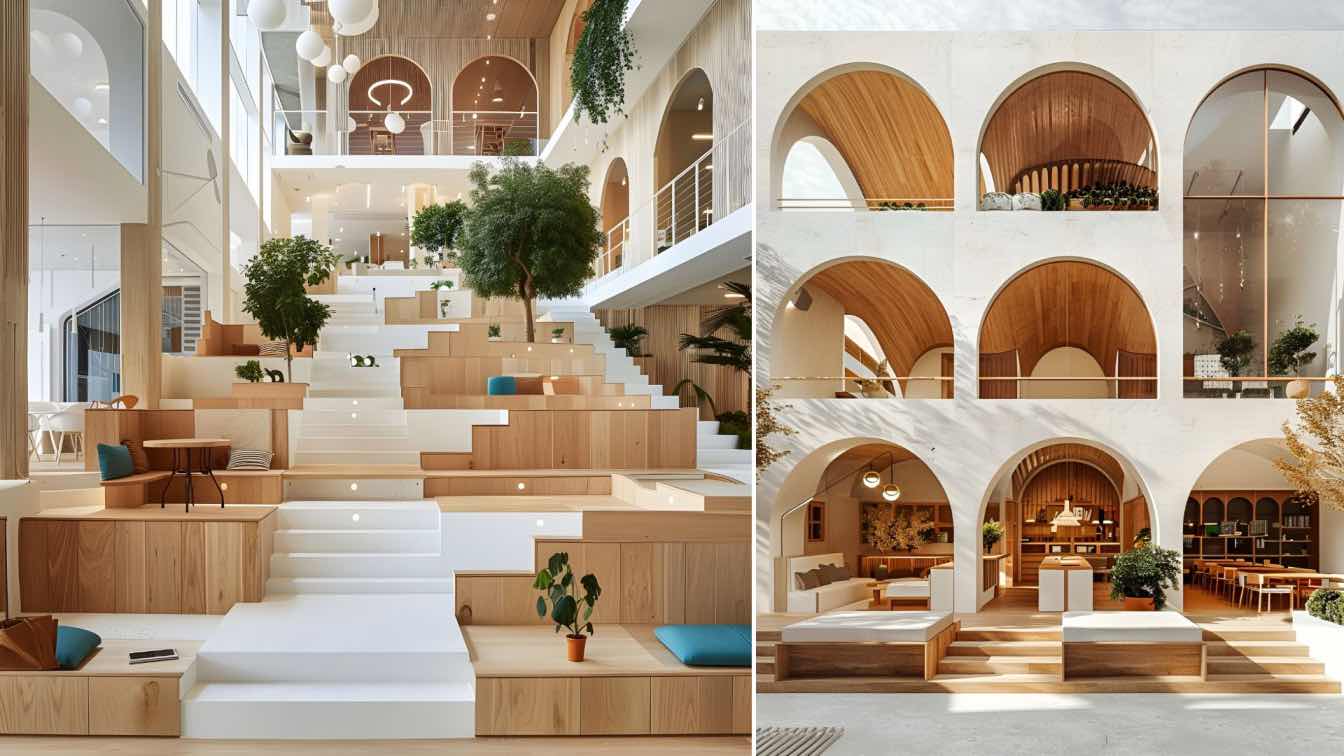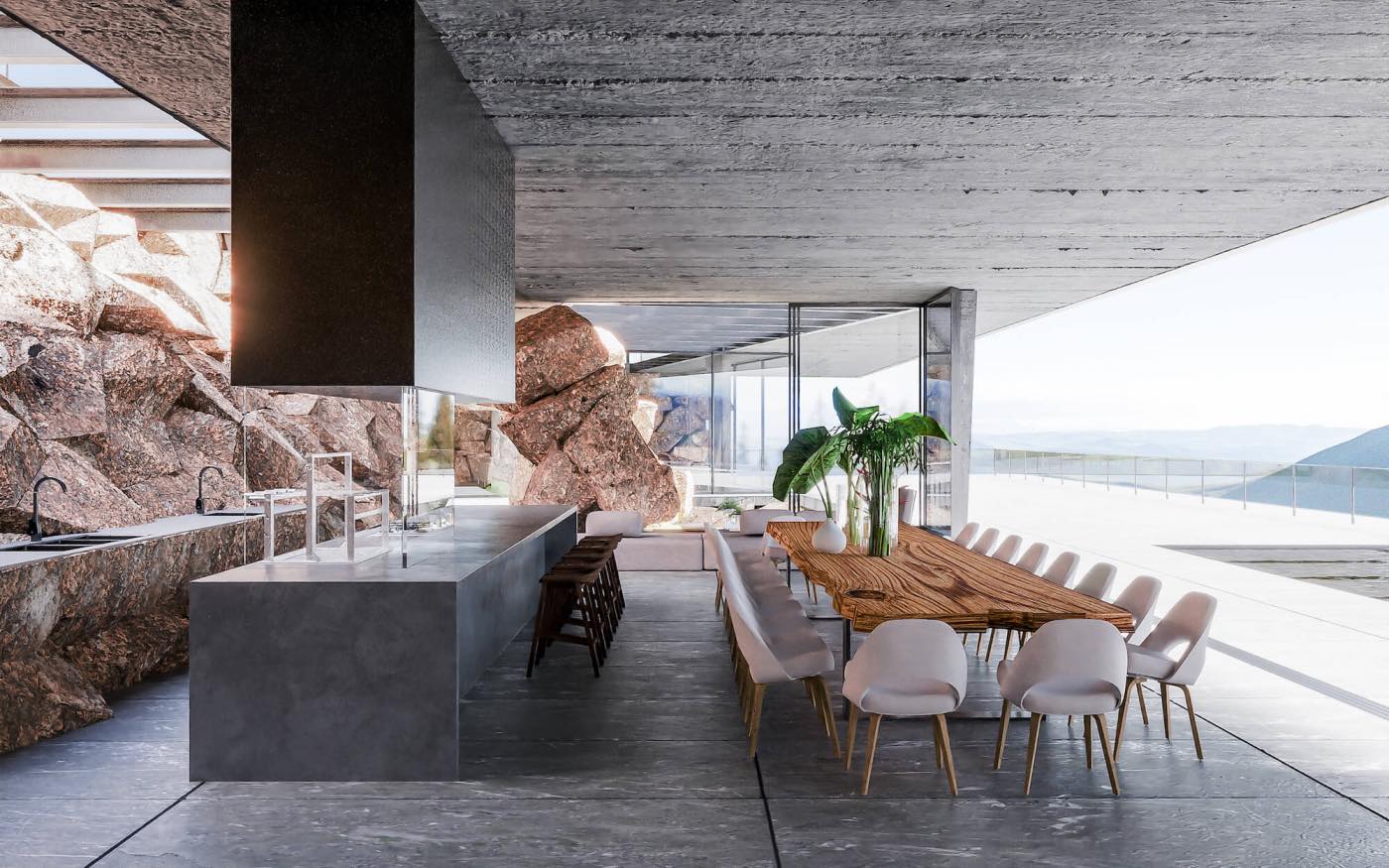Meaning ‘inheritance passed down through generations’, ‘Asaan’ will be an institution in Diriyah, Saudi Arabia dedicated to preserving and celebrating the nation’s heritage.
With over 600 years of Najdi architecture and history preserved within its mud-brick structures, the At-Turaif district of Diriyah was listed as a UNESCO World Heritage Site in 2010.
Informed by traditional Najdi architecture, the Asaan museum will be built with locally produced clay mud-bricks, ZHA’s first adobe-constructed project worldwide.
Diriyah is considered the birthplace of the Saudi Arabian nation and one of the Kingdom’s most important heritage sites. With over 600 years of Najdi architecture and history preserved within its mud-brick structures, the At-Turaif district of Diriyah was listed as a UNESCO World Heritage Site in 2010.
Meaning ‘inheritance passed down through generations’, Asaan will be an institution dedicated to preserving and celebrating this rich heritage, in addition to promoting creativity and knowledge sharing.

Supported by the Misk Foundation, a non-profit organisation devoted to cultivating learning and leadership in young people, the museum aims to foster connections with the nation’s cultural heritage through interactive exhibitions, immersive experiences, workshops and events. On-site conservation labs will support the restoration and preservation of historical archaeological artifacts.
Informed by traditional Najdi architecture, the Asaan Museum will be constructed in locally produced clay mud-bricks. Built to a thickness that provides high insulating properties in Diriyah’s hot desert climate, the low-embodied-carbon adobe walls incorporate a high thermal mass to maintain interior comfort while reducing energy demand for cooling.
The three-storey design is defined by the scale and geometries of the old town, as well as the museum’s traditional construction techniques and materials. Composed predominantly of the region’s local clay, this materiality echoes Diriyah’s historical vernacular architecture.
Centred around three shaded courtyards, a defining feature of the local Najdi architecture, serving as anchors to the museum’s three distinct programmes: Educational, Arts, and Administrative, these courtyards provide comfortable external spaces that shield visitors from climatic conditions. Shading devices create a variety of outdoor sheltered landscaped gardens, public plazas and rooftop promenades.

The Asaan, Misk Heritage Museum is integrated within the Diriyah Gate masterplan that protects and promotes Diriyah’s ancient cultural heritage while also creating a 100% walkable city, which prioritises water conservation, energy efficiency, wellness, and climate resilience.
Khaled Al-Saqer, CEO of Asaan, Misk Heritage Museum, said: “Asaan’s role extends beyond preserving and displaying artifacts; it seeks to inspire meaningful engagement through immersive experiences that connect past, present, and future generations, strengthening pride in Saudi identity and sharing our cultural legacy with the world. Driven by our belief in community participation as a pillar of heritage preservation, Asaan will offer a wide range of interactive programs curated by leading experts. These initiatives aim to foster cultural passion, inspire creativity, and empower all members of society to engage with and celebrate our heritage.”
Jerry Inzerillo, Group CEO of Diriyah Company, said: “Asaan is a valuable addition to Diriyah’s portfolio of cultural projects and demonstrates our commitment to presenting the richness of Saudi heritage in a contemporary way that strengthens its global presence.”



Project Team
Client: Diriyah Company
Architect: Zaha Hadid Architects (ZHA)
ZHA Design: Patrik Schumacher
ZHA Project Directors: Viviana Muscettola, Maurizio Meossi (Associate Director), Bidisha Sinha (Associate Director / Interior Design)
ZHA Project Associates: Cristina Capanna (Senior Architect / Project Manager); Architecture: Nannette Jackowski, Marco Amoroso; Interor Design: Roberta Sartori, Marco Pavoni, Marie-Perrine Placais; BIM: Mark Winnington.
ZHA Project Team: Alessandra Laiso, Andy Lin, Angela Augelli Curci, Angus Tung, Aysu Aysoy, Caleb Baldwin, Chhavi Mehta, Chiara Baiocco, Didem Sahin, Elizabeta Diakantonis, Gaurav Janendra, Gizem Muhtaroğlu, Henry Louth, Ines Fontoura, Juliana Hernandez Cardona, Karan Puranik, Karmung Sze, Karoly Markos, Karthikeyan Arunachalam, Keerti Manney, Lam Nguyen, Lars Elseth, Leeanne Li, Li Jin, Liam Rogers, Louai Jaber, Luciana Maia Teodozio, Michael Rogers, Muaz Masri, Muriel Boselli, Nailu Chen, Nannette Jackowski, Neli Vasileva, Nivedita Ramachandran, Noa Guy, Nurul Ahmad Fauzi, Peter Safranka, Rabiyya Huseynova, Roberta Sartori, Ruggero Bruno Chialastri, Shantanu Bhatt, Sonia Renehan, Teodor Andonov, Tommaso Casucci, Tracy Shum, Valeria Perco, Yihoon Kim, Zachariah Hong.
Consultants
Local Architect: WMA / Inhabit
Structural Engineers: Inhabit
Quantity Surveyor: AECOM
General Contractor: El Seif
Cost Consultants: AECOM
Environmental Consultant: Inhabit
Façade Engineering: Inhabit
M&E Engineering: Inhabit
MEP: Inhabit
Fire Engineer: Egis / Inhabit
Landscape Consultant: DS Landscape
Lighting Design: Inhabit
Acoustic Consultant: Inhabit
Theatre Consultant: Theatre Projects
Project Management: AECOM
Restaurant Kitchen Consultant: Tricon
Water Features Specialist: Fountain Project
Conservation Areas Specialist: Samuel Anderson Architects
Accessibility: CAE
Signage / Wayfinding: SpaceAgency
Exhibition Designer: Opera Amsterdam; Sustainability: Egis; Security: Inhabit; AV / IT: Inhabit; Waste Management: Egis; Civil Engineer: Egis; People Movement: Systematica





